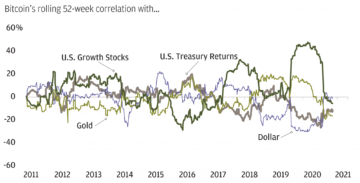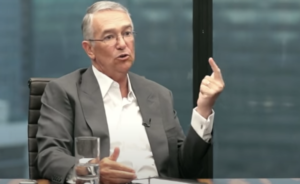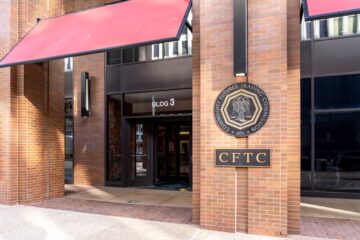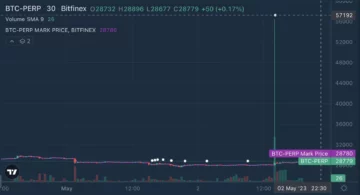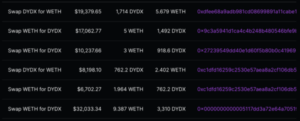
The Financial Times is unhappy with the entrance into mainstream of fiat money to describe the dollar, with Brendan Greeley, a contributing editor at FT, arguing “currencies are not memes that only have value because the governments say they do.”
In describing the money creation process, he says money doesn’t come into existence through thin air, but from assets:
“Bank dollars don’t have value just because your bank says they do. Your bank has regulators poking into its books, to make sure those loans are sound assets with decent returns.”
Bank dollars. That’s a powerful term we have previously used to describe the three strands of money and creation: cash, fed’s base money or reserve dollars, and then the commercially created bank money through credit.
Greeley is right of course that banks can’t just print for no reason, but their power to print at all is a hugely political matter because they decide who gets this money with banks’ previous discrimination against providing mortgages in black neighborhoods leading to the civil rights movement.
Nowadays in many aspects there’s a gov-bank partnership where gov takes all the risks and banks all the profits with student loans being the best example.
Student loans are not based on affordability because students have no income or assets, yet anyone granted the right to study at university is eligible for a student loan. If the student ends up not making much after university, the government covers this loan. If they do make good income, the bank makes about as much as the entire capital advanced in interest payments alone.
The same applies for a mortgage. The bank makes as much as an entire house in interest for every mortgage it advances if that mortgage is repaid in full.
In a simple relationship thus here we have a house and its owner who is paid the full capital by the mortgagee’s bank. Over the term of the mortgage of say 25 years, the mortgagee pays the bank twice the amount of the capital paid to the house owner, 1x towards the capital itself and 1x in interest payments on that capital over 25 years. The bank ‘burns’ 1x of the capital as that went upfront to the house owner, but the other 1x in interest becomes new permanent money. The mortgagee in effect has paid twice, once to the previous owner and once to the bank, and now in money terms there are two houses, not one house.
Physically obviously it is still one house, but new money worth as much as a house has now been created and has been taken by the bank.
Where does this new money come from? Let us suppose the house is not yet built. Our construction company builds it at the cost of $50,000 in total including labour, land, materials and everything. The mortgagee’s bank gives us $100,000 in a sale of the new house. Ta da, a new $50,000 has just been created and printed out of nothing. The bank will receive $200,000 over 25 years from the mortgagee if he or she repays in full, so in that period $150,000 has been literally printed out of nothing in technical terms where the dollar amount itself is concerned.
The term out of nothing however is misleading if taken literally. We did create $50,000 of new value in building this house ‘out of nothing’ with ‘nothing’ here being the effort and time of labour, including the organizational and good management of the construction company owner.
So $50,000 of this new money was printed out of nothing, but it corresponds to new value or assets as Greeley calls it, with the other $100,000 likewise corresponding to new value over a 25 year period as labour creates value and assets ‘out of nothing,’ like planting apple trees or digging copper out of the ground.
The dollar therefore and this entire system is what we have called a moving measurer of value. When you measure a table, the ruler is a fixed 20 centimeters, the table is one meter and that’s not going to change unless you modify the table. You can’t modify the ruler or the centimeter itself, the unit of measurement.
In a dollar system however the unit of measurement changes because new dollars have to be created to measure new value, with the creation of new dollars affecting all value. Thus in the example above, the $1 dollar that existed is worth $4 dollars in 25 years, or the dollar in general has fallen 75% in value because from $50,000 came $200,000, but in theory we now have 4x more actual value and so again in theory the dollar remains stable in pricing goods and services.
This system has existed for centuries, so to dismiss it out of hand is foolish, but to ignore its weaknesses or hide them altogether is also foolish, with such weaknesses contained in this term fiat which is the correct description of the system.
Fiat means at will and there are two elements here in the bank mechanistically being able to at will create new units of measurement, and in the bank ultimately being the one that puts a number to this new value.
Why is this new house we created worth $100,000 and not $75,000 or a million? You can say supply and demand or the market, but ultimately it’s because of how much credit the banking system as a whole has extended.
Just how much has been extended depends on borrowing demand and the creditworthiness of those demanding as well as the cost of credit, the interest rate.
The creditworthiness of those demanding however depends on just how much this house is worth, the new value, with no base layer here to the subjective judgment of value, and thus money creation.
That so being the fundamental problem with at will money creation, anchored by the subjective judgment of value which itself is in part affected by the fiat money creation.
If we go back to our house, and let’s say this is now based in central London, with the rich clientele very credit worthy, and so get a $10 million mortgage from the bank, when our cost of building the house was let’s say one million.
The bank is happy to lend even $20 million or $100 million, something that can create a significant difference between actual new value created and new money.
Regulators or auditors, even when they do function properly, don’t have much to say in these sort of situations because the system is working as designed, however the mechanism of creating new money for new value has gotten a bit out of touch with actual value or reality in this example.
The ability of it to get out of touch is the main criticism of fiat, alongside the highly political nature of decisions throughout the process of money creation.
“When we say the Fed is printing money, we imply that there was nothing, and now there is something. Ta da! But again, that’s not at all what happens. The Fed has to buy something. Usually it’s a Treasury bill, but in an emergency it can be a more questionable asset. Then the Fed credits back reserves. To believe those reserves are just a meme, you have to believe the assets are just a meme.”
So says Greeley, handwaving the main criticism by in effect dismissively conceding to the critics by stating:
“You may believe the US government will not be able to collect enough taxes to roll over those Treasury bills. If you are right, then yes, the dollar has no value.”
It’s not clear what Greeley thinks his critics are saying, with his argument appearing to tackle suggestions made by no one that Biden can just wake up one day and print one quadrillion dollars for no reason.
That probably won’t happen, but he is set to printed $3 trillion just this year, and sure you can say he can tax for it, but he can also keep borrowing more. Powell can say no, but he can fire Powell. People like Greeley might complain, but what are they gone do about it.
In this turtles reshuffling, moreover, Greeley seems to be saying it is not Fed printing out of nothing, but the government who issues bonds, with the Fed just ‘buying’ them. With what does the Fed ‘buy’ them if not newly printed money and since they can print at will, what exactly limits the amount of new bonds the government can issue?
Certainly not the tax intake, because if you’re printing new money by issuing bonds, you can pay old bond money with that, and so devalue all money in a tax of sorts.
Greeley’s argument however seems to be mainly towards suggesting Fed doesn’t just print ten trillion and give it away, the printing is only done through lending, with that having its own criticism in regards to why should the fed and its shareholding commercial banks be owed any interest for ‘buying’ bonds with money printed out of nothing. And since Fed isn’t audited, maybe some are saying they do outright print too, rather than just lend, but that’s not quite the way the term fiat is being used.
The fiat dollar as designed is technically and mechanistically created out of nothing when extending credit through lending, with there being no limit to this money creation except for borrowing demand and the creditworthiness of the borrower as judged by the individual banker or the Fed committee which can be corrupt at worst, or at best is incentivized to lend as much as possible because that’s how they make money, with this new money creation process leading to the devaluation of all money.
In addition, the Fed committee can not possibly have all the necessary information to make decisions on the cost of money, the interest rate, with its misjudgments creating booms and busts by setting rates too low or too high or changing them too slowly or too fast.
The alternative proposed is a competitive market for currencies where the market as a whole can best judge who is best at managing the value of a currency, with bitcoin being one such alternative which in contrast to the dollar has a fixed limit, and thus is like the ruler with the table.
The size of the bitcoin ruler does not change, the table – new value created like new houses – does change. The one centimeter (one bitcoin) unit of measurement is unmodifiable, but the table of course can be modified to be longer or shorter.
Unlike the dollar, bitcoin is not created by fiat, by decree, but by how all value is created: human labour.
Instead of new value devaluing all value where the dollar unit of measurement is concerned because new dollars are created, in bitcoin new value increases the value of all value in as far as there are now less coins for more value.
Where the dollar is concerned this devaluing aspect is generally counteracted by an increase in the value of assets, like houses. However wages are a lot more sticky, with Americans seeing no increase in real term on their wages since the dollar was taken off the gold peg in the 70s.
In bitcoin, the stickiness of wages should contribute towards all benefiting from new value, while in a dollar system, those that can borrow the most benefit the most. Something that translates to the rich get richer while the rest get poorer because their own labour that creates new value is effectively devaluing their own new labour.
Which one is best is for the market to decide, but that the dollar itself is printed by fiat out of nothing is of course something undeniable with there being no real anchor to it except political judgment.
Source: https://www.trustnodes.com/2021/07/05/dont-call-the-dollar-fiat-money-says-ft
- 000
- AI
- All
- Apple
- asset
- Assets
- Bank
- Banking
- Banks
- BEST
- biden
- Bill
- Bills
- Bit
- Bitcoin
- Black
- Bonds
- Books
- Borrowing
- Building
- buy
- call
- capital
- Cash
- change
- clientele
- Coins
- commercial
- company
- construction
- content
- Creating
- credit
- Credits
- currencies
- Currency
- DA
- day
- Demand
- DID
- Discrimination
- Dollar
- dollars
- editor
- ends
- FAST
- Fed
- Fiat
- Fiat Money
- financial
- Financial Times
- Fire
- full
- function
- General
- Gold
- good
- goods
- Government
- Governments
- here
- Hide
- High
- House
- houses
- How
- HTTPS
- Including
- Income
- Increase
- information
- interest
- issues
- IT
- Labour
- leading
- LEND
- lending
- loan
- Loans
- London
- Mainstream
- Making
- management
- Market
- materials
- measure
- meme
- memes
- million
- money
- Mortgage
- Other
- owed
- owner
- Partnership
- Pay
- payments
- People
- power
- pricing
- Rates
- Reality
- Regulators
- REST
- returns
- Roll
- sale
- Services
- set
- setting
- Simple
- Size
- So
- Student
- Study
- supply
- system
- tax
- Taxes
- Technical
- time
- touch
- treasury
- Trustnodes
- university
- us
- us government
- value
- WHO
- worth
- year
- years

